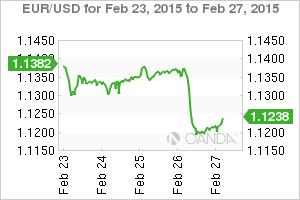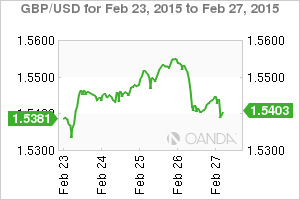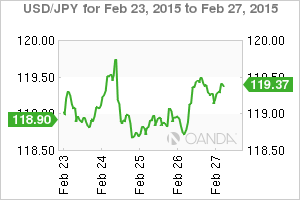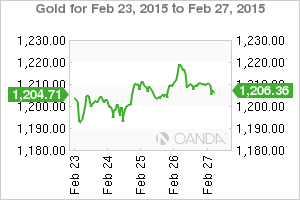Fed sticks to lower for longer
U.S CPI an excuse to buy more dollars
Fed September hike fully priced in
Central Banks rate announcements dominate proceedings
As to be expected, the Fed dominated this past week. Although the markets did not get the anticipated price moves when Yellen was giving her testimony on the ‘hill’, that came on the back of Thursday’s U.S CPI, she has certainly been able to keep market guessing on the timing of rate lift off in the U.S.
The Fed Chair did not give the hawks what they were expecting, but on the other hand she was not overtly dovish either. Like any good Central Banker she was extremely “vague and ambiguous” enough to keep markets guessing on when the Fed will move and what the move will be. The Fed bar remains at the “lower for longer” even while a June lift-off remains on the cards.
That being said, nothing appears to have startled U.S policy makers off the trail to rate normalization. During her testimony Yellen struck a more upbeat tone on labor market conditions and included how the forward guidance will be amended. Everything is data dependent, and next week’s non-farm payroll numbers will again be expected to play a major role.
U.S CPI woke Capital Markets from Inertia
On Thursday, U.S CPI inflation reading for January fell into negative territory for the first time in five-years, with the -0.1% decline a big slip from the previous month’s +0.8% reading.
The reading was widely expected, with crude prices being the main culprit. The core reading, which strips out energy prices, remains well short of Fed expectations, was unchanged from the prior month at +1.6%, but still healthy. Somewhat offsetting was the U.S durable goods data bouncing back from the very weak showing in December (+2.8% vs. +1.7%), with most components growing strongly.
The market did not have to wait long for a Fed response. Fed moderate Bullard responded to the CPI data by highlighting the core reading. He said the impressive monthly jobs reports would continue and wage growth around +2% is roughly appropriate with where the economy is performing right now, given +1.5% core-CPI and +0.5% productivity growth.
Fed Governor Williams said if data kept coming in as expected, rate hikes could begin as early as this summer. He said that he expects to see U.S unemployment to fall to around +5% by the end of the year (full employment) and sees an increase in the purchasing powers of businesses. In other words, the Fed needs to start removing some accommodation before full employment and +2% inflation.
Normally, longer dated bonds would be the big loser on an upside surprise to core-CPI. However, this week most of the damage has occurred in the short-end with yields on two-year notes rising faster (+0.642% from +0.611%) than their much longer dated counterpart. This would suggest that a June rate hike remains on the table even with Yellen’s highly touting data dependence this week. Fed futures are now pricing in a +33% chance of a +25bps hike in June while a September hike is fully priced in.
The EUR managed to fall off its own cliff in the wake of the U.S CPI data and this despite most of the market wading to the sidelines hoping to wait out month-end activities. Outright, the 19-member single currency fell to a one-month low just under the psychological €1.1200 handle. The USD continues to consolidate its recent strength into the weekend following the US core inflation as the lower European yields are helping to give the greenback an advantage ahead of the formal launch of the ECB’s QE program. The EUR bears remain confident and are now waiting for QE to begin.
On Tap for Next Week
Thrills and spills are very much on the cards for next week. Central Banks rate announcements will dominate the agenda, followed in hot pursuit by next Friday’s U.S non-farm payrolls release. Ms. Yellen and her colleagues spoke positively about the U.S job situation this week. Will U.S employment data back the Fed up?
Like Yellen, Governor Poloz from the BoC did not provide a clear signal about whether the Bank of Canada will again lower interest rates at next week’s policy meeting during a speech this week. He emphasized that last months -25bps cut (on the back of plummeting energy prices) buys time to see how the Canadian economy responds.
The majority assumed it was a slam-dunk that the BoC would be easing again on March 4; however, the possibility of a potential pause has thrown an extra spanner into the Canada’s bear tool kit. The cut last month was aimed at taking out “some insurance” against these risks. Being proactive gives the governor confidence that the Canadian economy will return to capacity by the end of next year. Last months rate cut to +0.75% was the first since 2009. The Governor seems to have stepped away from “transparency” and has become rate “opaque.” The loonie dealers could be in for a wild ride now that the BoC has everyone guessing.
The ECB’s next meeting on March 5 will not match the January 22 meeting in terms of excitement. However, investors may be privy enough to getting some QE direction. The ECB might be in a position to reveal the exact starting date and list of agencies eligible for QE purchases.
The bulk of next week’s excitement will be centered on the U.S job market data. Can the world’s largest economy continue to churn out a strong monthly report? Will the U.S manage to move the unemployment needle towards full-employment?
This article is for general information purposes only. It is not investment advice or a solution to buy or sell securities.
Opinions are the authors — not necessarily OANDA’s, its officers or directors. OANDA’s Terms of Use and Privacy Policy apply. Leveraged trading is high risk and not suitable for all. You could lose all of your deposited funds.
Recommended Content
Editors’ Picks
EUR/USD extends gains above 1.0700, focus on key US data

EUR/USD meets fresh demand and rises toward 1.0750 in the European session on Thursday. Renewed US Dollar weakness offsets the risk-off market environment, supporting the pair ahead of the key US GDP and PCE inflation data.
USD/JPY keeps pushing higher, eyes 156.00 ahead of US GDP data

USD/JPY keeps breaking into its highest chart territory since June of 1990 early Thursday, recapturing 155.50 for the first time in 34 years as the Japanese Yen remains vulnerable, despite looming intervention risks. The focus shifts to Thursday's US GDP report and the BoJ decision on Friday.
Gold closes below key $2,318 support, US GDP holds the key

Gold price is breathing a sigh of relief early Thursday after testing offers near $2,315 once again. Broad risk-aversion seems to be helping Gold find a floor, as traders refrain from placing any fresh directional bets on the bright metal ahead of the preliminary reading of the US first-quarter GDP due later on Thursday.
Injective price weakness persists despite over 5.9 million INJ tokens burned

Injective price is trading with a bearish bias, stuck in the lower section of the market range. The bearish outlook abounds despite the network's deflationary efforts to pump the price.
Meta takes a guidance slide amidst the battle between yields and earnings

Meta's disappointing outlook cast doubt on whether the market's enthusiasm for artificial intelligence. Investors now brace for significant macroeconomic challenges ahead, particularly with the release of first-quarter GDP data.



